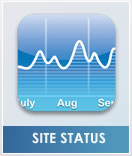|
In 1999 the Web Accessibility Initiative, a
project by the World Wide Web Consortium (W3C), published the Web
Content Accessibility Guidelines WCAG 1.0.
Since publication the WAI recommendations have been widely accepted
as best practice guidelines in developing universally accessible
websites.
In 2006 the British Standards Institution (BSI) in collaboration
with the Disability Rights Commission (DRC) published PAS 78: Guide
to good practice in commissioning accessible websites. Aimed
primarily at UK businesses, charities, volunteer organisations, as
well as local and central government it describes the web standards
and usability testing needed for producing accessible websites.
The guideline is largely based the W3C's Web Content Accessibility
Guidelines with an additional emphasis on the use of structured
mark-up, avoiding presentational attributes, and recommending the
use of CSS layouts. PAS 78, in essence advocates the use of existing
web standards.
Not only does the Disability Discrimination Act now make it unlawful
for 'service providers to discriminate against a disabled person by
refusing to provide them any service which it provides to members of
the public', but there also are many powerful Search Engine
Optimisation and business advantages to creating accessible
websites.
Quick to recognise their legal obligations and the commercial
benefits, many organisations have adopted the principles of web
accessibility as advocated by W3C and PAS 78 with accessibility
becoming an important contributory factor in website design and
development. A quick Google search for web accessibility today
returns nearly 31 million results.
At SEO-MAMA our PAS 78 compliance programs generate win/win
solutions. Not only do site visitors enjoy improved accessibility
and a superior site use experience but also our clients enjoy the
benefits of access to a larger user base, improved Search Engine
Optimisation, lower long-term administration overheads and the
subsequent rewards to their bottom line.
More than half of the population in the UK may face some form of
difficulty in accessing content and information on the Internet with
14% of the population, some 8.6 million people registered disabled.
The needs that Web accessibility aims to address include:
· Visual: Visual impairments including blindness, various
common types of low vision and poor eyesight, different types of
colour blindness.
4% of the UK population, that's 2 million people have problems with
their sight.
One in 12 men and one in 200 women have some form of colour
blindness - that's 9% of the population.
· Motor/Mobility: e.g. difficulty or inability to use the
hands, including tremors, muscle slowness, loss of fine muscle
control, etc., due to conditions such as Parkinson's Disease,
muscular dystrophy, cerebral palsy, stroke;
· Auditory: Deafness or hearing impairments, including
individuals who are hard of hearing.
9 million people in the UK have impaired hearing from partial
hearing to profound deafness - 15% of the population
· Seizures: Photoepileptic seizures caused by visual strobe
or flashing effects.
· Cognitive/Intellectual: Developmental disabilities,
learning disabilities (dyslexia, dyscalculia, etc.), and cognitive
disabilities of various origins, affecting memory, attention,
developmental "maturity," problem-solving and logic skills, etc.;
There are 2 million people with learning difficulties in the UK - 4%
of the population
· An aging population - In the UK 12 million people (21%) are
aged 60 or over
The Employers Forum on Disability estimate that disabled people in
the UK have a disposable income of £50 billion per year with the
over 60 years additionally commanding a significant amount of the
disposable income in the UK. Clearly, making your web presence
accessible to more users allows organisations access to their
spending power.
We offer a whole range of design and development input that can
address numerous accessibility issues and at the same time improve
general site performance, Search Engine
Ranking and Usability through best practice development.
Best Practice Coding
At SEO-MAMA we code sites using clean HTML code to create a site
search engines can easily add to their indexes and users can easily
access.
Examples include - ALT descriptions are assigned to images enabling
the Screen Readers of visually impaired visitors read it out. We
make sure that text is displayed through HTML and not images. Text
embedded in images is difficult to read and should be avoided.
Link text in an accessible website must always be descriptive of its
destination enabling visitors to scan pages by tabbing from link to
link listening to the content of the link text.
Flash, like JavaScript, has historically been inaccessible to many
users, including those using screen readers. Where possible we
minimise any Flash or JavaScript content.
As page titles are one of the most important attributes on the page
we make sure they are meaningful. This principle also applies to
headings and sub-headings. By tabbing across titles and headings
visitors gain a clear understanding as to the nature of the content.
We develop an architecture and workflow that Makes Sense To Search
Engines and to your audience. Site maps, or more complete directory
offer no nonsense lists of links to visually impaired users,
Well-coded sites form the basis of a successful web presence with a
high ratio of content to code and the kind of fast-loading,
accessible structure that search engine and users adore.
Increased accessibility of different devices and browsers.
With tens of millions of mobile devices likely to be sold worldwide
this year we're extremely keen to make content easily accessible to
in-car browsers, WebTV, Lynx browsers, Screenreaders and PDAs. We
develop CSS (Cascading Style Sheets) based sites with strong ratios
of content to code. This enables screen readers and mobile browsers
and devices to more effectively work through the HTML code. Search
engines also like high content, clean CSS based sites.
Websites will work well at different screen sizes such as 640x480,
800x600, 1024x768, and 1152x864 as well as on all browsers such as
Internet Explorer, Firefox, Opera, Maxthon, Safari, Netscape,
Konqueror, JAWS screen reader, and on PDAs, and screen sizes ranging
from 600px to 1600px in width.
Improve page download times
Using CSS for the site's layout not only makes it work well across
different technologies but in effect separating content from
presentation significantly improving web page download times.
Usability studies have shown that the maximum time web users will
wait for a page to download is in the region of 9 seconds after
which they'll get frustrated and go elsewhere.
Save on Bandwidth
For high traffic sites significant savings can accrue through using
CSS, reducing file sizes by up to 50%.
|



















